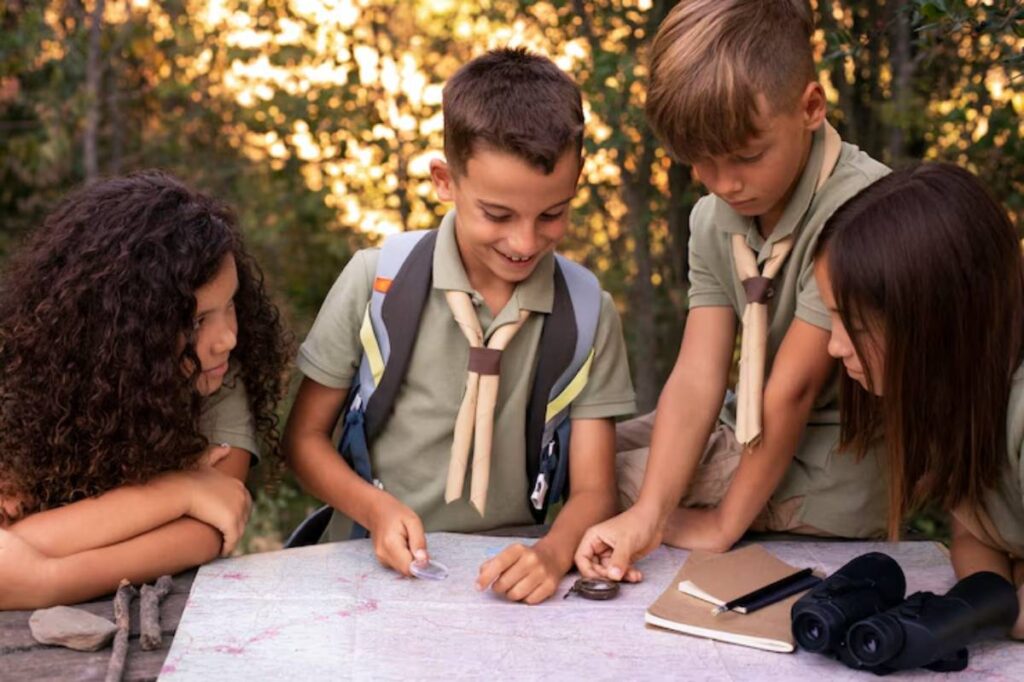The Education Blog

How to Plan a Homeschool Field Trip That’s Educational and Fun
Ever tried teaching geography in the middle of a museum exhibit? Or sparked a love for science during a nature walk? Homeschool field trips bring lessons to life in a way no textbook can match. For many home educators, these outings become the most cherished and effective part of the week.
If you’ve ever wondered how to strike the right balance between learning and leisure, this homeschool field trip guide is your roadmap. Whether you’re planning your first excursion or looking to refresh your routine, you’ll discover strategies to make every outing count — from practical checklists to expert tips.
Let’s explore how to turn the world into your classroom — and make it a lot of fun along the way.
Understanding the Core: Why Field Trips Matter in Homeschooling
Homeschooling is all about flexibility and relevance. Field trips enhance that by offering tangible, real-world experiences. Educational outings give children the opportunity to apply their knowledge, engage different senses, and build social and life skills.
Studies show that experiential learning — learning by doing — significantly improves retention and critical thinking. When children explore a working farm during a biology unit or visit a planetarium while learning about space, they internalise the subject on a deeper level.
Moreover, field trips provide:
- Sensory-rich experiences that cater to visual, auditory, and kinesthetic learners
- Opportunities for socialisation, especially when planned with other homeschoolers
- Enhanced motivation, breaking the monotony of indoor or screen-based study
- Real-world application of abstract academic concepts
With thoughtful planning, educational outings can reinforce curriculum goals while nurturing curiosity and independence.
Quick Guide: Planning a Successful Homeschool Field Trip
Quick Guide: Homeschool Field Trip Planning Checklist
- Identify learning objectives based on your curriculum
- Choose a location that aligns with your goals
- Research group rates, guided tours, or homeschool days
- Prepare pre-trip lessons or activities to build context
- Create a checklist of materials, gear, and snacks
- Involve your child in planning for better engagement
- Schedule time for reflection and follow-up activities
Step-by-Step Guide: How to Plan a Homeschool Field Trip
1. Define Your Learning Goals
Start by asking: What do we want to learn from this trip? Whether it’s history, science, literature, or life skills, anchor your destination to your homeschooling objectives.
Example: Studying American history? A visit to a historical reenactment site can bring colonial life alive.
2. Choose the Right Destination
Match your goals with places that offer hands-on or interactive learning.

- Zoos
- Museums (science, art, history)
- Botanical gardens and nature reserves
- Farms and food production centres
- Historical landmarks
- Local businesses and factories
- Performing arts theatres
- Government buildings or courtrooms
Use your location to your advantage. Local treasures often provide rich learning without the need for long travel.
3. Check for Homeschool Discounts and Events
Many institutions host special homeschool days, which include discounted tickets, free worksheets, or themed tours. Sign up for newsletters from local venues or homeschool groups.
Pro Tip: Call ahead to ask about guided tours, age-appropriate materials, and accessibility options.
4. Plan Pre-Trip Activities
Prepare your child with context to boost engagement:
- Read books or watch documentaries related to the destination
- Discuss what they expect to see or learn
- Introduce new vocabulary or concepts
- Let them help research and plan
5. Organise the Logistics
Think ahead to ensure the day runs smoothly:
- Confirm hours, parking, and ticketing
- Pack lunches, water, notebooks, and weather-appropriate clothing
- Bring a clipboard or folder for brochures, maps, or drawing
- Establish ground rules for behaviour and safety
- If possible, plan group transport for co-op field trips
6. During the Trip: Stay Flexible
While structure helps, don’t over-plan. Allow time for spontaneous discovery.
Important: Give children time to ask questions, explore side exhibits, or revisit areas that fascinated them.
7. Post-Trip Reflection and Activities
Extend the learning after the outing:
- Ask your child to journal about the experience
- Create a scrapbook or photo collage
- Write a thank-you letter to a guide or venue
- Discuss what surprised them and what they’d like to learn more about
Pro Tips, Important Notes & Warnings
Pro Tip: Use audio tours or scavenger hunts to keep older children engaged during longer visits.
Important: Always review safety protocols and first-aid availability for outdoor trips or crowded locations.
Warning: Avoid scheduling back-to-back field trips without downtime — it can lead to burnout rather than enrichment.
Best Practices & Additional Insights
Turn Local Outings into Learning Gold
You don’t need grand destinations. A visit to a local bakery can turn into a maths lesson on measurement, fractions, and ratios. Your post office visit becomes a social studies lesson on communication networks.
Use Case: A family in Yorkshire turned their weekly market visit into a unit on budgeting, nutrition, and small business operations. Their children now manage the family meal planning budget.
Involve Other Families

Collaborative field trips offer shared costs, new friendships, and broader perspectives. Consider joining a co-op or planning a monthly group outing. Not sure how to start? Learn about joining co-ops and support networks here in our homeschool co-ops and support groups guide
Capture and Share
Encourage children to document their field trips with photos, sketches, or short videos. These can be used in homeschool portfolios or reviews — an important part of demonstrating learning progress.
how-to-create-a-homeschool-portfolio-for-reviews-or-colleges
FAQs
What age is appropriate for homeschool field trips?
Field trips can be adapted for any age, from toddlers to teens. Tailor the location and activities to your child’s developmental stage and learning goals.
How often should homeschoolers go on field trips?
There’s no set rule. Many families aim for one trip per month, while others incorporate weekly mini-excursions. It depends on your schedule, budget, and goals.
Can field trips count as official school days?
Yes — in most homeschooling frameworks, field trips qualify as instructional time, especially when aligned with curriculum objectives.
What should I pack for a homeschool field trip?
Essentials include snacks, water, notebooks, pencils, a camera, first-aid supplies, and any site-specific gear (e.g., binoculars for nature reserves).
How do I assess learning from a field trip?
Use post-trip discussions, creative projects, or simple worksheets to reinforce concepts and document understanding.
Enrich Your Homeschool with Real-World Adventures
A well-planned field trip does more than fill a day — it can ignite a lifelong passion. By thinking intentionally, involving your children, and using your surroundings creatively, you’ll transform every outing into a meaningful experience.
With this homeschool field trip guide in hand, you’re ready to explore your world — one learning adventure at a time.
Take the first step: Browse local museums, parks, or community events and start mapping your next educational outing today.









